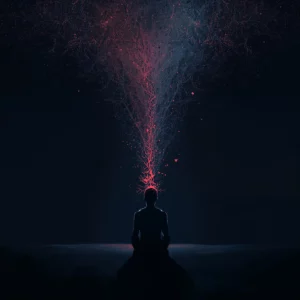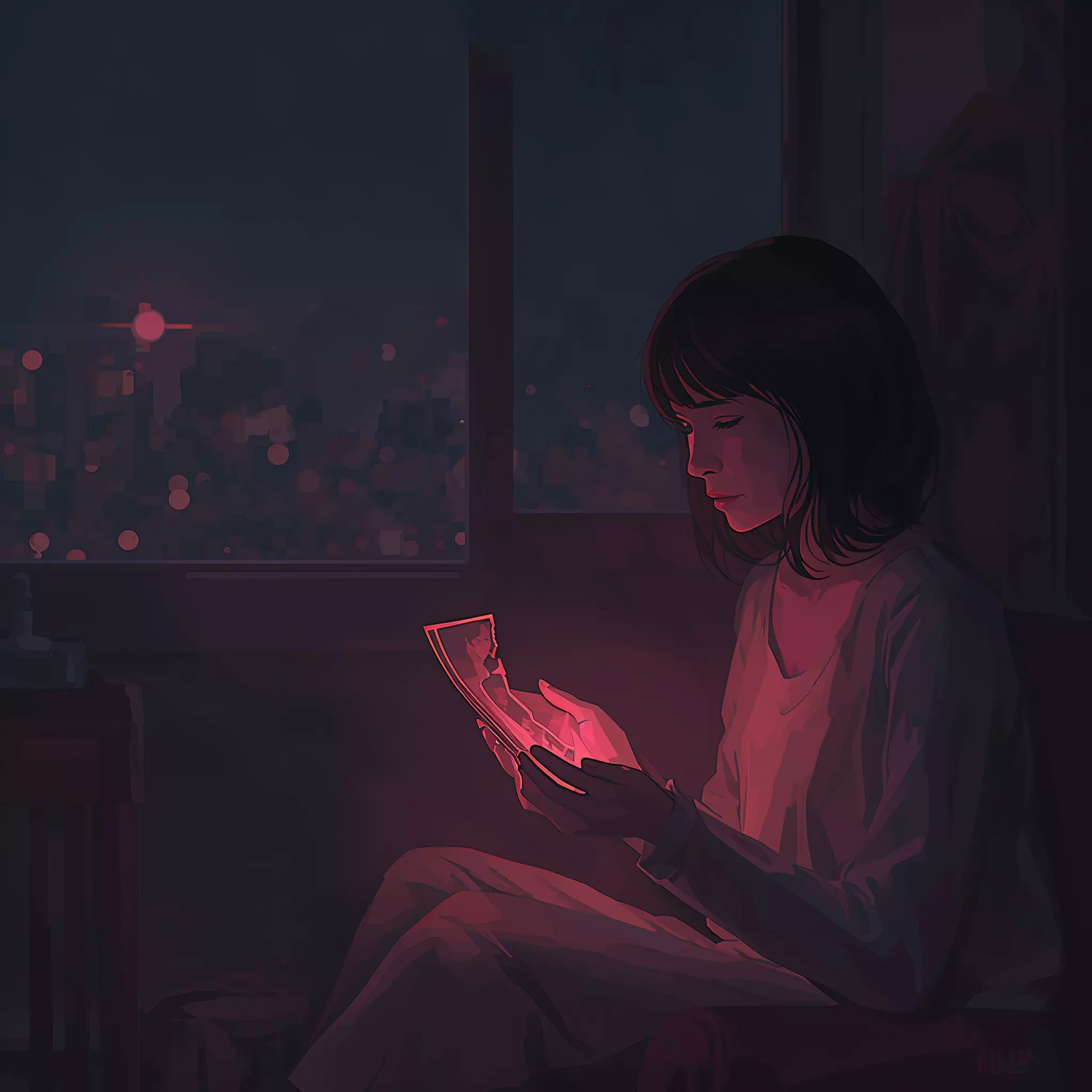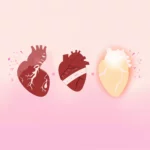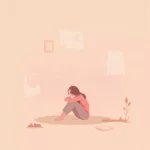Table of Contents
You know the feeling. One day you’re laughing with a friend, managing life’s ups and downs just fine. Then suddenly, after a breakup, the floor seems to collapse. The sadness isn’t just heavy—it feels like breakup grief that rattles your bones. People might say, “It’s just heartbreak, you’ll get over it.” But deep down, you sense this isn’t the same as ordinary sadness. This is something else entirely.
Breakup grief vs. regular sadness
Sadness is a natural, passing emotion—like a rainy afternoon. It soaks you, but eventually, the clouds part.
Breakup grief, however, behaves more like an earthquake. It comes in aftershocks, waves that crash and recede, then rise again without warning.
Research shows that, unlike ordinary sadness, breakup grief resembles bereavement:
- It disrupts your identity
- Shakes your self-worth
- Forces you to grieve not just the loss of a partner, but the self you were with them
That’s why it lingers, why it feels so layered, and why it resists tidy timelines.


Why Breakups Hurt So Much (Science of Heartbreak & Healing)
Let’s examine breakups in: Biology of love & loss, Attachment styles, Rejection psychology, Closure, Rumination, Grief
Tap here to read more →Why breakup grief feels so overwhelming
What makes breakup grief uniquely piercing is that it doesn’t just touch your heart—it jolts your attachment system. The human brain is wired to bond, to find safety in connection.
When that bond is severed, it registers as a threat to survival, not just a passing disappointment. Studies show that people with anxious attachment styles often feel this rupture most intensely, looping through:
- Self-blame
- Longing
- Self-punishment
Regular sadness rarely carries this kind of weight. Breakup grief feels overwhelming because it’s not only the absence of love—it’s the sudden absence of the anchor that told you who you were and where you belonged.

Breakup grief or depression? Knowing the difference
Here’s the hard part: breakup grief can look like depression, and it’s easy to confuse the two. But there are distinctions worth noticing:
- Breakup grief → Moves in waves, bringing moments of reprieve between storms
- Depression → Feels constant and suffocating, flattening joy and self-worth
Though painful, grief doesn’t always attack your self-esteem. You may hurt deeply, but still know you are worthy of love. Depression, on the other hand, corrodes that sense of worth and makes the future feel hopeless.
If your breakup pain feels endless, if relief never comes, or if your self-worth is shattered beyond recognition, it may be something more than grief. That’s when reaching for professional support isn’t just wise—it’s necessary.
Heartbreak isn’t “just sadness.” It is breakup grief, raw and intricate, reshaping how you see yourself and the world.
Understanding this distinction doesn’t make the pain vanish, but it does something almost as important: it gives you permission to treat your heartbreak as real grief—worthy of time, care, and compassion.
And perhaps, in knowing that what you’re carrying is not weakness but human grief, you can begin to walk a little more gently with yourself through the aftershocks.
FAQ
Q1. What is the difference between breakup grief and regular sadness?
Breakup grief is a grief response, not just sadness. It comes in waves, disrupts identity, and can impact self-worth, whereas sadness is usually temporary.
Q2. How long does breakup grief usually last?
It varies. Some people start healing within months, while for others it can last a year or more due to attachment loss and identity shifts.
Q3. Can breakup grief turn into depression?
Yes. If the pain becomes constant, hopeless, and deeply damages self-esteem, breakup grief can develop into depression, requiring professional support.
Q4. Why does breakup grief feel more painful than other kinds of sadness?
Because it activates the brain’s attachment system, triggering rejection, loneliness, and even feelings of failure—making it heavier than everyday sadness.
Scientific Sources
-
Burger et al. (2020): Bereavement or breakup: Differences in networks of depression symptoms following two types of marital disruption
Key Finding: Breakup grief involves distinct depressive and loneliness-related dynamics compared to typical bereavement, including higher feelings of failure and social disconnection.
Why Relevant: Shows that breakup grief is not the same as sadness or bereavement—it has its own unique emotional structure.
https://pubmed.ncbi.nlm.nih.gov/32063559/ -
Gehl et al. (2023): Attachment and Breakup Distress: The Mediating Role of Coping Strategies
Key Finding: Individuals with attachment anxiety report stronger depressive and anxiety symptoms post-breakup, mediated by self-punishment and weak coping strategies.
Why Relevant: Highlights how breakup grief uniquely activates attachment systems and maladaptive coping, setting it apart from normal sadness.
https://www.ncbi.nlm.nih.gov/pmc/articles/PMC10727987/ -
CharlieHealth (summarizing APA) (2023): Can a breakup cause depression?
Key Finding: APA differentiates grief from depression: grief comes in waves and preserves self-esteem, while depression is constant and erodes self-worth.
Why Relevant: Clarifies the clinical difference between breakup grief and depression, helping readers distinguish between normal pain and disorder.
https://www.charliehealth.com/post/can-breakups-cause-depression
- Breakup Grief vs Sadness: The Powerful Truth You Need to Know

- Breakup Grief Stages: Why You Can’t Skip One (and Why That’s Okay)

- Breakup Grief Timeline: How Long It Really Lasts and When Healing Begins

- Why the Stages of Grief After a Breakup Don’t Go in Order (and What It Really Means)

- Acceptance After a Breakup: Why It’s Not Peace but Powerful Progress

- Breakup Depression: Why It Feels Like You’ll Never Be Okay

- The Bargaining Stage of a Breakup: Escaping the ‘What If I Text Them?’ Trap

- Breakup Anger: The Untold Truth About the Rage Phase and How to Heal

- Denial After a Breakup: Why Numbness Is Normal (and Necessary)


Leave a Reply